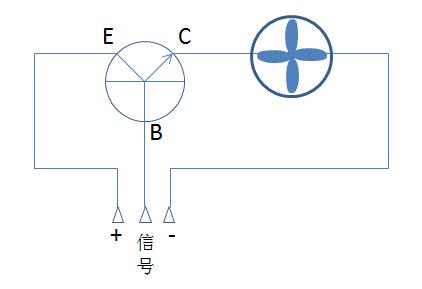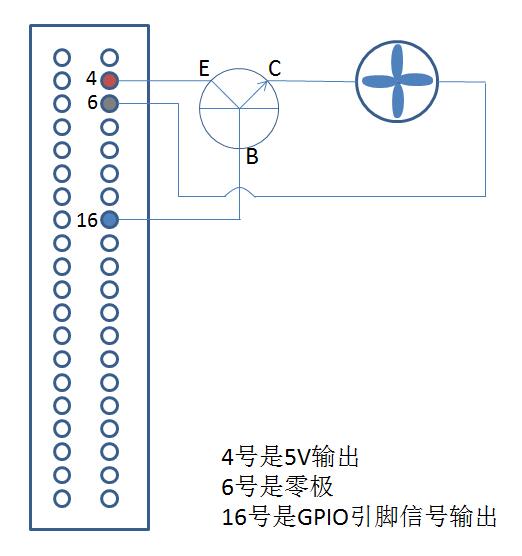硬件上
一、思路: GPIO 给三极管基极信号
使用三极管组成开关电路。以 S9013 为例,S9013 是 NPN 型三极管。关于 NPN 型三极管,S9013 的特性如下:
NPN 基极高电压,极电极与发射极短路。低电压,极电极与发射极开路。也就是不工作。
二、接线
相关电路图如下:



软件上
一、GPIO 简单使用
首先看一些例程:
1.GPIO 输出
1 | # -*- coding: utf-8 -*- |
2.控制 LED 灯闪烁
1 | import RPi.GPIO as GPIO |
三、环境准备
先要安装 RPi.GPIO 库:
1.更新源:
1 | sudo apt-get update |
2.安装 python:
1 | sudo apt-get install python-dev |
3.安装 python-pip( python-pip 是一个可以替代 easy_install 的安装和管 python 软件包的工具)
1 | sudo apt-get install python-pip |
4.利用 pip 安装 rpi.gpio:
1 | sudo pip install rpi.gpio |
四、编写程序
加入时间控制,在每天的 6 点后开始执行温度控制,12 点 30 分停止温度控制,关闭风扇,13 点 30 分开启温度控制,22 点 50 分后停止执行温度检测控制,关闭风扇。
考虑到实际使用时可能会有重启的需要,所以还需要在 6 点到 23 点有判断,但也可能是自己做麻烦了。
1 | #!/usr/bin/python2.7 |
测试代码,执行很成功。